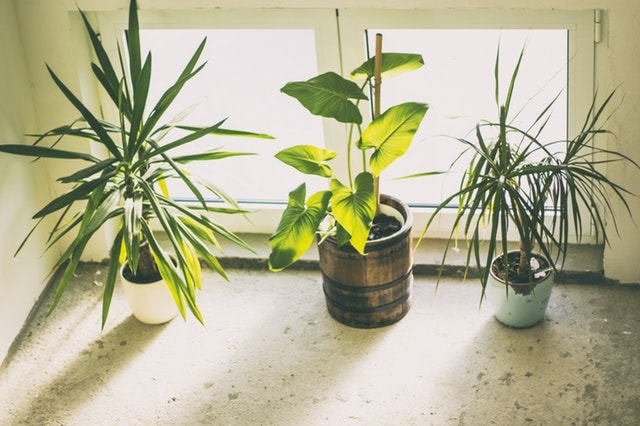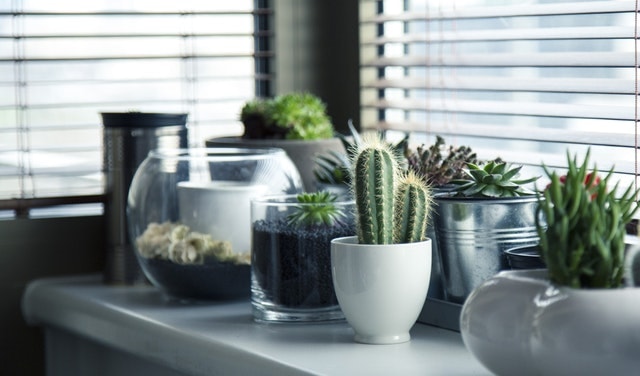Last Updated on 3 years by Namrata
In today’s time, we all are living in limited space, most of us live in flats or even small houses with not much green space around us to grow our favorite plants. And keeping so many pots around in the house here and there seems a bit out of fashion. Also, it doesn’t keep up with the ambiance of your home.
Terrariums are a great solution to this problem. This helps you in bringing little greenery to your home. Terrariums are basically micro pots created mainly using flasks, glass vases, kitchen bowls, cooky jars or even some people use small tanks. It totally depends upon you what you prefer. Whatever you can imagine can possibly be your terrarium, thus giving you a variety of choices to choose from.
Types of Terrariums
Yes I know, I said that you can have anything as a terrarium of your choice and it’s true. But Terrarium can be broadly categorised as of two types :
- Open Terrariums
- Closed Terrariums
The main difference between the two is that an open terrarium is preferred by plants that require drier conditions and are a little more strong. Whereas, closed terrariums are more suitable for those plants that grow well in warm humid conditions, eg ferns, orchids, moss, etc. This is because closed terrariums have their own microclimate created inside by trapping moisture. You should keep open terrarium plants where they get optimal sunlight.
Rare and Unusual Plants to Grow in your Terrarium
Not all plants are suitable to grow in the terrarium. Also, you need to choose plants based on the type of terrarium used i.e open or closed. This is because, in a closed terrarium, plants need to survive in specific conditions like low airflow, limited space, and high humidity.
So let’s begin our list.
1. Air Plants for Terrariums

Also known as Tillandsia is one of the truly unique and rare terrarium plants, and it is quite difficult to grow one. They require special care. This plant belongs to the Bromeliaceae family. They got this name because most of these plants don’t have roots and they live off to air moisture and some light.
Now coming to why it’s special care. Unlike other plants, you can’t just directly water it. You will need to take them gently out of the terrarium and soak them or lightly moist them and once they are again completely dry then put them back in the terrarium. This requires moisture and air circulation all day around in the terrarium so you should prefer an open one. I hope now you believe me that they are a bit special.
But it has advantages too, you can relocate them anywhere easily without any hassle.
2. Sansevieria Starfish Plant
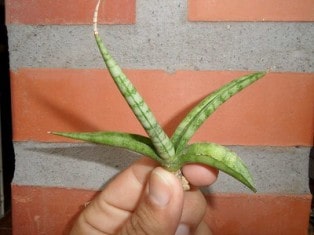
Also known as Boncel. It is one of the most loved plants out there which you can plant in the terrarium. This can be an attraction for the guests at your house. It grows only six inches tall this feature makes it an ideal plant for a small terrarium. Its other feature is that its leaves’ color depends upon the amount of sunlight it receives. This plant also belongs to the Bromeliaceae family. They have series of spikes on their edges.
When it comes to taking care of the starfish plant, it requires low bright sunlight, and it’s advised to plant them in a regular succulent potting mix. As it also belongs to the same family as Airplants so you need to water them only when they are completely dry as it collects water in its leaves. The average temp required for optimal growth is below 50 degrees F.
3. Pilea Cadierei (Watermelon pilea)
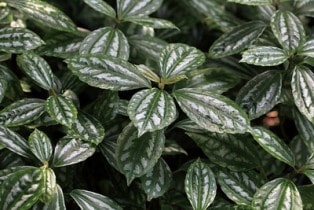
Commonly known as The Aluminium Plant, has exquisite-looking decorative little leaves. The origin of this terrarium plant is basically in Vietnam. You might be thinking why is it called the aluminum plant, the reason is that if you will look carefully at leaves there are silver raised patches that resemble the aluminum foil and the reason behind watermelon pilea is that if looked at the whole plant from above, it looks pretty similar to watermelon.
You will need to maintain low to medium light and a bit warmer temperature as the watermelon pilea is a typical modest tropical plant. One important piece of advice is that pinch it from time to time, as it helps in the bushy growth of the plant. The speed of growth is quite fast, so don’t worry about pinching again and again. Also, you can easily use the pinched parts to plant new Pilea cadierei in your house.
4. Prayer Plant
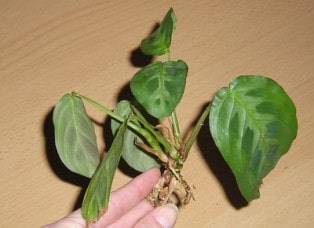
The scientific name is Maranta leuconeura, but it is popularly known as the Prayer plant. The reason behind this name is that it folds up its leaves every night which seems like they are praying before sleeping. In the mornings they are back to normal. Their leaves are quite attractive as they have red veins design all over them, and these can be as large as 12 inches. So make sure you make a large enough terrarium for this plant. There is another beautiful activity which this plant does, that is if you will not provide this plant with enough light it will not open its leaves even in the mornings. So make sure you
provide it with medium light all around the year. During summers and spring, make sure o water regularly, in winters you can skip the daily routine and water them less frequently.
5. Venus Flytrap
The scientific name is Dionaea muscipula. If we are having a list of rare and unusual terrarium plants then how can we miss some carnivorous plants from the list? Venus flytrap is one of the most famous carnivorous plants in the world. The reason for its popularity is its hunting style, It has very attractive leaves and whenever an insect touches the leaves, some kind of sensor runs through the body of the plant and it closes its pair of jaws. It becomes impossible for an insect to escape from the sharp teeth-like structure. Then plant releases its digestive enzymes.
Now coming to how you can plant it in a terrarium. So you need to take care of the following points:
- You will need an open terrarium, it is common sense because the plant feeds on insects, so you need a way for insects to enter the terrarium.
- It needs bright sunlight, so keep it in a place where it can get direct sunlight throughout the day.
- You make adjust the substrate of the terrarium and make it a bit acidic.
- Keep the roots saturated with water throughout, the water needs to be normal ph water not with no minerals. You can prefer rainwater too.
- Hibernation is required for a longer life span of the plant.
6. Baby Tears
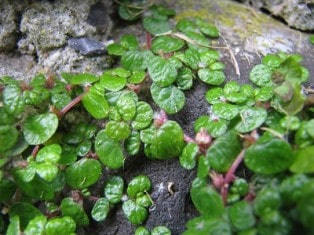
Its scientific name is Soleirolia soleirolii. This small cute plant has the ability to form tiny, lush green bean-shaped leaves. These leaves spread like fire and spill over the sides of the terrarium. Although people use Baby tears to fill some empty spots in big terrariums with other plants. This got its name because of its tiny structure and you need to handle this with uttermost care. They are so delicate that improper handling could lead to damage instantly.
You will need to keep them in a much cooler place as they don’t prefer direct sunlight and high humidity, so it’s better to prevent dry conditions.
7. Hypoestes Phyllostachya
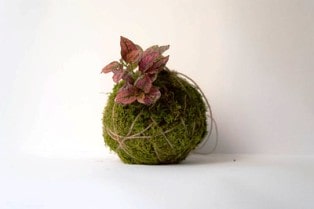
Also known as Polka Dot Plant, got this name because of its irregular shape and dots instead of straight lines. This plant produces beautiful tiny flowers in the spring season. It can grow to be 10-20 inches tall, so you must keep this in mind while designing the terrarium for it.
Polka dot plant prefers bright sunlight, so keep them in a place where they receive ample amount of sunlight throughout the day. Leaves start turning dull green in color if they don’t get enough light. But of course, there is a drawback, it doesn’t last for long, once flowers emerge it starts fading away and soon you will need to replace them. Although you can increase its lifetime a
bit longer by pinching regularly. You can even use the cuttings to root new plants or even replace the old ones.
8. African Violet
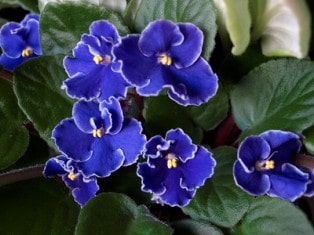
They are one of the most beautiful plants out there. One of the perfect plants for terrarium due to their thirst for humid conditions. You need to provide them with ample sunlight throughout the day. They grow to be around 5 – 6 inches tall.
9. Calathea
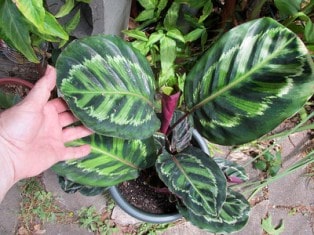
It is a good choice for a terrarium as it prefers a tropical environment. It likes moisture and humidity too. They don’t require direct sunlight. They grow into green, white, and pink colored leaves, which give a beautiful look to your terrarium.
How To Make A Terrarium
If you have never made a terrarium before then don’t worry we are here for you. Follow the below steps:
- The first step is to choose a glass bowl or any structure which you think will be good for plant growth as well as get mix up with your home decor too.
- Now we need to have a base for the plant, so fill the bottom with a layer of charcoal(searles) or gravel.
- Now you need to cover your base with a mixture of searles terrarium and fern. Keep the depth appropriate enough so that plant’s root system can grow easily. This mixture which you just designed will deliver superior quality nutrients for the surreal growth of plants.
- Now very carefully and gently remove the unwanted soil around the roots and keep on flattening the roots till possible and reaches their final position.
- Now it’s time for the decoration, you can use pebbles, moss, colored stones, etc whatever you wish for. Just spread them around the plants and make your terrarium look beautiful.
- You will need to clean the terrarium from time to time, from outside to keep it beautiful. Remember to do it gently.
Watering your Terrarium
It is recommended to water your terrarium regularly but adequate amount. It also depends upon which type of terrarium you have.
Closed Terrariums: As I told you that in closed terrariums, they create their own microclimate by capturing moisture, so you don’t wanna disturb that. You will have to water a minimal amount regularly. Remember to remove the lid/cap of the terrarium every night, and gently clean the slides of the terrarium to make it dry. If anytime you find some condensation in your terrarium then either reduce the amount of water or even stop watering for some time.
Open Terrariums: In an open terrarium, you need to make sure that the water doesn’t get pooled at the bottom of the glass. So water using a spray bottle or small watering sprinkler and that too only once a week. In the warmer season, you may need to water the plants more frequently. We are suggesting you water less because excess water leads to the drowning of the roots.
Taking care of Terrariums
Although terrariums require very little maintenance, still you have to occasionally clean your terrariums to avoid fungal growth and diseases. Other basic things like removing dead leaves, unruly stems regularly are suggested as it helps keep your plants in the desired shape and make sure your plant growth is continued. We have already told you to open the lid of closed terrariums and spray water every fortnight and in an open terrarium just wiping corners of glass regularly is enough.
Conclusion
To conclude I would say that terrarium are a great way to see plants life. If you want to plant some terrariums, just do it. Now you know almost everything which you will need in your journey. Terrariums are quite diversified, so you don’t have to worry about your location or anything, just search for the best-suited one and go all in.
Please share your terrarium experience with us, we would love to hear that.
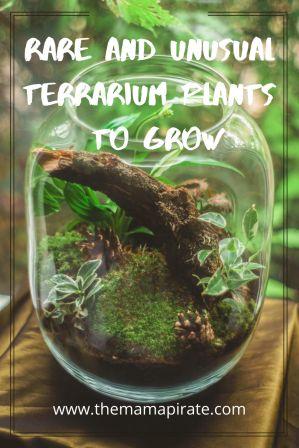
You may like these Posts:
How to make purslane/portulaca more bushy?
How to increase humidity for indoor plants without a humidifier?
How to grow a coconut tree from a store bought coconut?

